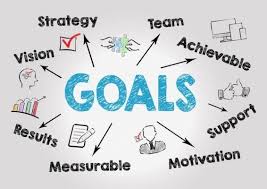Evaluation is a crucial aspect of any educational endeavor, including the development and implementation of educational strategies. By systematically assessing the effectiveness of these strategies, educators and stakeholders can gain valuable insights into what works well, what needs improvement, and how to optimize resources for better learning outcomes. In this inclusive guide, we will explore various methods and metrics for measuring the success of educational strategies, with a focus on enhancing teaching and learning in diverse educational settings.
Understanding Educational Resource Strategies
Before delving into evaluation techniques, it is essential to clarify what constitutes educational strategies. It encompasses a broad range of approaches aimed at providing learners with access to high-quality learning materials, tools, and support systems. These strategies may include the development of curriculum materials, digital resources, textbooks, educational software, teacher training programs, and more. The overarching goal of educational strategies is to enhance teaching and learning experience by providing educators and learners with the resources they need to succeed.
Importance of Evaluation
Evaluation plays a pivotal role in the continuous improvement of educational strategies. By systematically assessing the effectiveness of these strategies, educators can identify strengths and weaknesses, make informed decisions about resource allocation, and tailor interventions to meet the evolving needs of learners. Evaluation also provides valuable feedback for stakeholders, including policymakers, funders, and educational leaders, enabling them to assess the return on investment and make data-driven decisions about the allocation of resources.
Student Engagement and Satisfaction
One key metric for evaluating educational resource strategies is student engagement and satisfaction. Surveys, focus groups, and interviews can be used to gather feedback from students about their experiences with different learning materials and resources. By assessing student engagement levels and satisfaction rates, educators can gauge the effectiveness of educational resources in capturing learners' interest and fostering a positive learning environment.
Learning Outcomes and Academic Achievement
Another critical metric for evaluating educational strategies is learning outcomes and academic achievement. Pre- and post-assessments, standardized test scores, and course grades can provide valuable data on students' knowledge and skills acquisition. By comparing student performance before and after the implementation of educational strategies, educators can assess the impact of these strategies on learning outcomes and academic achievement.
Teacher Effectiveness and Professional Development
Educational resource strategies also impact teacher effectiveness and professional development. Surveys, observations, and self-assessments can be used to measure changes in teachers' instructional practices, confidence levels, and job satisfaction. Additionally, professional development activities, such as workshops, trainings, and coaching sessions, can provide educators with the knowledge and skills they need to effectively implement educational strategies in their classrooms.
Access and Equity
Access and equity are essential considerations when evaluating educational strategies. Data on resource distribution, utilization rates, and demographic disparities can help identify gaps in access and opportunities for improvement. By ensuring equitable access to high-quality educational resources for all learners, educators can promote inclusivity and support diverse student populations in achieving their full potential.
Cost-Effectiveness and Sustainability
Finally, cost-effectiveness and sustainability are critical metrics for evaluating educational resource strategies. Cost-benefit analyses, budget reviews, and resource utilization reports can help assess the economic efficiency of different interventions. By identifying cost-effective solutions and sustainable practices, educators can maximize the impact of educational strategies while optimizing resource allocation for long-term success.
Best Practices for Evaluation
Before conducting an evaluation, clearly define the objectives and criteria for success. Establishing clear goals and benchmarks will help guide the evaluation process and ensure that relevant data is collected and analyzed. Utilize a mix of qualitative and quantitative methods to capture an inclusive picture of effectiveness. Surveys, interviews, observations, and data analysis can provide valuable insights into different aspects of educational strategies. Involve stakeholders, including educators, students, parents, administrators, and community members, in the evaluation process. Soliciting input from diverse perspectives will help ensure that evaluation findings are robust and meaningful.
Conclusion
Evaluation is a critical component of effective educational resource strategies, providing valuable insights into what works well and what can be improved. By systematically assessing the effectiveness of these strategies using a variety of metrics and methods, educators can optimize resource allocation, enhance teaching and learning experiences, and ultimately, promote positive outcomes for learners. By following best practices for evaluation and engaging stakeholders in the process, educators can ensure that educational strategies are tailored to meet the diverse needs of learners and support their success in school and beyond.





Comments